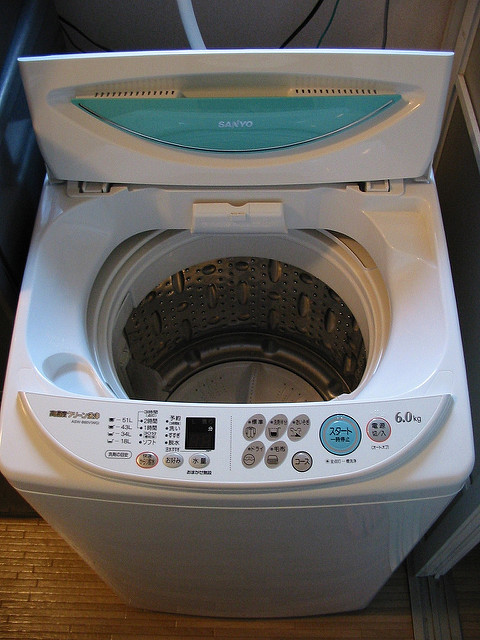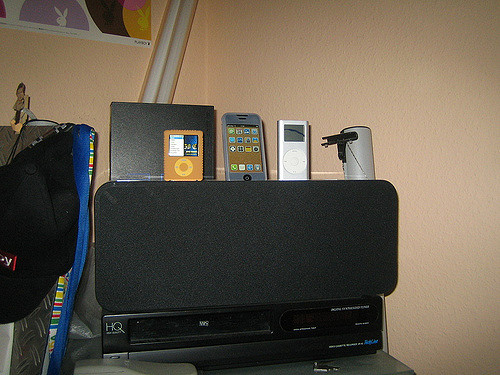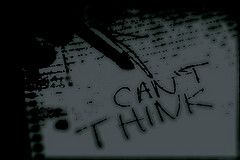|
|
|
Monday, August 12th, 2019

Poking through 11+ years of posts I find information that’s as useful now as when it was written.
Golden Oldies is a collection of the most relevant and timeless posts during that time.
Good, bad or silly, ideas for products are generated in response to a problem or need. It doesn’t matter if the problem/need only exists in the entrepreneur’s mind (think Jucerio), it’s still the driving force behind creating whatever. So what happens when there are no perceived problems? When the current whatever is treated as THE solution? Innovation takes a nosedive and monopolies thrive.
Read other Golden Oldies here.
I’m not sure whether to laugh or cry when I see ads for stuff that responds to voice command, especially when it’s for stuff like changing the TV channel. I guess that using the remote takes either too much energy or too much intelligence to work it.
Everything today is about convenience, a trend I’ve been suspicious of, although I wasn’t sure why.
However, after reading an op-ed piece by Tim Wu, a law professor at Columbia and the author of “The Attention Merchants: The Epic Struggle to Get Inside Our Heads,” called The Tyranny of Convenience I’m starting to understand what about it makes me itch.
In the developed nations of the 21st century, convenience — that is, more efficient and easier ways of doing personal tasks — has emerged as perhaps the most powerful force shaping our individual lives and our economies.
Granted I’m known as a digital dinosaur, but there are some conveniences — washing machines, telephones, cars, email, and Skype chat, among them — I’m all for — although I see no reason they need to be smart .
However, I have no cell phone, avoid any app, service, etc., provided by Google, clean my own house, wash my own clothes, shop for my own food, and do my own cooking just as I’ve done since I was 18.
I search using startpage.com, no ads, no tracking and my life functions just fine without always being connected. I’m not on social media and don’t suffer from FOMA; I meet friends for meals and fun and we talk on the phone in-between.
I suppose that all sounds very inconvenient these days, but I’m never bored and enjoy the feelings of accomplishment that come with doing stuff yourself, as well as figuring out better ways to do it — it’s called ingenuity.
I’ve seen many “convenient” items come to market years after I came up with a similar approach to use for myself.
Americans say they prize competition, a proliferation of choices, the little guy. Yet our taste for convenience begets more convenience, through a combination of the economics of scale and the power of habit. The easier it is to use Amazon, the more powerful Amazon becomes — and thus the easier it becomes to use Amazon. Convenience and monopoly seem to be natural bedfellows (emphasis mine).
Professor WU (or someone) needs to do a follow-up article entitled, “How Convenience Killed Creativity and Strangled Entrepreneurship.
Image credit: jim212jim
Posted in Entrepreneurs, Innovation, Personal Growth | No Comments »
Tuesday, November 27th, 2018

In the intro to yesterday’s post, about how boredom often triggers creativity, I referred to the hoops being jumped through to foster creativity in the workplace.
Unfortunately, it’s not working and that’s what to day’s post is about.
You may have noticed that creativity is all the rage—and not just among artists. American culture, and indeed the world, has become obsessed with manufacturing creative kids, who will turn into inventive workers, who will then become the innovative leaders we need in these rapidly-changing times. (…) As creativity is increasingly touted as the “premiere skill” of our time, [Diane] Senechal argues, there’s little interest in just letting this ability develop independently. Instead, it is being quantified, dissected and tested, taught and measured.
That approach may work on some talent, but developing creativity isn’t one of them.
In reality, that approach does more to destroy creativity than almost anything else.
The enormous number of major discoveries grounded in serendipity should be enough to convince people that structure and pressure don’t work.
If institutions really want to encourage creativity, in other words, they’ll have to develop the requisite patience to wait for it—and the ability to recognize what inventiveness is really made of. Insisting on innovation will never work, according to Senechal. “Perhaps the worst thing for creativity is dogma,” she argues. “Dogma delights in nothing; it insists on its own rigid ways.”
Of course, humans are notorious for believing they can improve any process by structuring it — even when it goes against research and proven results.
Bottom line, if you want your people to be more creative you need to let go, not hold on.
Image credit: Rigby Financial
Posted in Culture, Ducks In A Row, Personal Growth | No Comments »
Monday, November 26th, 2018

Poking through 11+ years of posts I find information that’s as useful now as when it was written.
Golden Oldies is a collection of the most relevant and timeless posts during that time.
Creativity and innovation are on every bosses’ mind and they do everything possible to create an environment and/or process to increase it — but it’s not working. In fact, as all those efforts are actually crippling creativity. Join me tomorrow for a look at what’s actually happening.
Read other Golden Oldies here.
Let’s start with a short personal quiz.
A. Do you consider yourself creative?
B. Do you
- love your iPad;
- wouldn’t be caught dead without your smartphone;
- can’t conceive of spending time without a music source;
- still follow TV shows, whether on TV or online;
- all of the above, often simultaneously?
What if B interferes or even cancels A?
What if the springboard for creativity and creative problem solving is boredom; a mind free of distractions that can wander untethered?
…a phenomenon that’s been identified by Edward de Bono, the legendary creative thinker. He calls it the “creative pause.” (…)The creative pause allows the space for your mind to drift, to imagine and to shift, opening it up to new ways of seeing.
From HBS’ Jim Heskett’s research question on deep thinking to my own comments on the value of silence, the need for undistracted time and the resulting creativity is well documented.
To be or not to be distracted is an individual free choice and can’t be dictated by others, but it is always wise to look at the consequences of one’s chosen actions.
Distracted driving kills people.
Distracted thinking kills creativity and innovation.
Image credit: MacintoshDo
Posted in Culture, Innovation | 1 Comment »
Friday, February 23rd, 2018

A Friday series exploring Startups and the people who make them go. Read all If the Shoe Fits posts here.
If I have to listen/read one more time about value/importance/etc of hiring “stars” or the “best” whatever I think I may scream. Or, better yet, shove the words/premise down the appropriate throat.
While I, and a small minority, have tried to debunk this mindset we haven’t made much progress.
So here’s an article from Scott E Page, the Leonid Hurwicz collegiate professor of complex systems, political science and economics at the University of Michigan, Ann Arbor.
Perhaps you’ll pay attention to him.
Why hiring the ‘best’ people produces the least creative results
While in graduate school in mathematics at the University of Wisconsin-Madison, I took a logic course from David Griffeath. The class was fun. Griffeath brought a playfulness and openness to problems. Much to my delight, about a decade later, I ran into him at a conference on traffic models. During a presentation on computational models of traffic jams, his hand went up. I wondered what Griffeath – a mathematical logician – would have to say about traffic jams. He did not disappoint. Without even a hint of excitement in his voice, he said: ‘If you are modelling a traffic jam, you should just keep track of the non-cars.’
The collective response followed the familiar pattern when someone drops an unexpected, but once stated, obvious idea: a puzzled silence, giving way to a roomful of nodding heads and smiles. Nothing else needed to be said.
Griffeath had made a brilliant observation. During a traffic jam, most of the spaces on the road are filled with cars. Modelling each car takes up an enormous amount of memory. Keeping track of the empty spaces instead would use less memory – in fact almost none. Furthermore, the dynamics of the non-cars might be more amenable to analysis.
Versions of this story occur routinely at academic conferences, in research laboratories or policy meetings, within design groups, and in strategic brainstorming sessions. They share three characteristics. First, the problems are complex: they concern high-dimensional contexts that are difficult to explain, engineer, evolve or predict. Second, the breakthrough ideas do not arise by magic, nor are they constructed anew from whole cloth. They take an existing idea, insight, trick or rule, and apply it in a novel way, or they combine ideas – like Apple’s breakthrough repurposing of the touchscreen technology. In Griffeath’s case, he applied a concept from information theory: minimum description length. Fewer words are required to say ‘No-L’ than to list ‘ABCDEFGHIJKMNOPQRSTUVWXYZ’. I should add that these new ideas typically produce modest gains. But, collectively, they can have large effects. Progress occurs as much through sequences of small steps as through giant leaps.
Third, these ideas are birthed in group settings. One person presents her perspective on a problem, describes an approach to finding a solution or identifies a sticking point, and a second person makes a suggestion or knows a workaround. The late computer scientist John Holland commonly asked: ‘Have you thought about this as a Markov process, with a set of states and transition between those states?’ That query would force the presenter to define states. That simple act would often lead to an insight.
The burgeoning of teams – most academic research is now done in teams, as is most investing and even most songwriting (at least for the good songs) – tracks the growing complexity of our world. We used to build roads from A to B. Now we construct transportation infrastructure with environmental, social, economic and political impacts.
The complexity of modern problems often precludes any one person from fully understanding them. Factors contributing to rising obesity levels, for example, include transportation systems and infrastructure, media, convenience foods, changing social norms, human biology and psychological factors. Designing an aircraft carrier, to take another example, requires knowledge of nuclear engineering, naval architecture, metallurgy, hydrodynamics, information systems, military protocols, the exercise of modern warfare and, given the long building time, the ability to predict trends in weapon systems.
The multidimensional or layered character of complex problems also undermines the principle of meritocracy: the idea that the ‘best person’ should be hired. There is no best person. When putting together an oncological research team, a biotech company such as Gilead or Genentech would not construct a multiple-choice test and hire the top scorers, or hire people whose resumes score highest according to some performance criteria. Instead, they would seek diversity. They would build a team of people who bring diverse knowledge bases, tools and analytic skills. That team would more likely than not include mathematicians (though not logicians such as Griffeath). And the mathematicians would likely study dynamical systems and differential equations.
Believers in a meritocracy might grant that teams ought to be diverse but then argue that meritocratic principles should apply within each category. Thus the team should consist of the ‘best’ mathematicians, the ‘best’ oncologists, and the ‘best’ biostatisticians from within the pool.
That position suffers from a similar flaw. Even with a knowledge domain, no test or criteria applied to individuals will produce the best team. Each of these domains possesses such depth and breadth, that no test can exist. Consider the field of neuroscience. Upwards of 50,000 papers were published last year covering various techniques, domains of enquiry and levels of analysis, ranging from molecules and synapses up through networks of neurons. Given that complexity, any attempt to rank a collection of neuroscientists from best to worst, as if they were competitors in the 50-metre butterfly, must fail. What could be true is that given a specific task and the composition of a particular team, one scientist would be more likely to contribute than another. Optimal hiring depends on context. Optimal teams will be diverse.
Evidence for this claim can be seen in the way that papers and patents that combine diverse ideas tend to rank as high-impact. It can also be found in the structure of the so-called random decision forest, a state-of-the-art machine-learning algorithm. Random forests consist of ensembles of decision trees. If classifying pictures, each tree makes a vote: is that a picture of a fox or a dog? A weighted majority rules. Random forests can serve many ends. They can identify bank fraud and diseases, recommend ceiling fans and predict online dating behaviour.
When building a forest, you do not select the best trees as they tend to make similar classifications. You want diversity. Programmers achieve that diversity by training each tree on different data, a technique known as bagging. They also boost the forest ‘cognitively’ by training trees on the hardest cases – those that the current forest gets wrong. This ensures even more diversity and accurate forests.
Yet the fallacy of meritocracy persists. Corporations, non-profits, governments, universities and even preschools test, score and hire the ‘best’. This all but guarantees not creating the best team. Ranking people by common criteria produces homogeneity. And when biases creep in, it results in people who look like those making the decisions. That’s not likely to lead to breakthroughs. As Astro Teller, CEO of X, the ‘moonshoot factory’ at Alphabet, Google’s parent company, has said: ‘Having people who have different mental perspectives is what’s important. If you want to explore things you haven’t explored, having people who look just like you and think just like you is not the best way.’ We must see the forest.
Scott E Page
This article was originally published at Aeon and has been republished under Creative Commons.
Image credit: HikingArtist
Posted in Entrepreneurs, Hiring, If the Shoe Fits, Innovation | No Comments »
Monday, October 9th, 2017
It’s amazing to me, but looking back over more than a decade of writing I find posts that still impress, with information that is as useful now as when it was written.
Golden Oldies are a collection of what I consider some of the best posts during that time.
This Golden Oldie dates to 2015, although many of the links are much earlier. Suffice it to say that two years later more companies have turned to technology and more people spend their days with screens than with each other. Simultaneously, engagement has plummeted, moral is in the basement, and toxic cultures are on the rise.
Join me tomorrow when we explore the connection between the two.
Read other Golden Oldies here.
 A Friday series exploring Startups and the people who make them go. Read all If the Shoe Fits posts here A Friday series exploring Startups and the people who make them go. Read all If the Shoe Fits posts here
Do you use technology to solve problems? Enhance creativity and drive innovation? Develop your team and build your people?
Years ago I wrote Fools, Tools, and Management Cool about how technology doesn’t take the place of good management.
I’ve written about the advantages of silence and the importance of unwiring and how to be Luftmenschen (people who deal in the non-tangible: ideas, thoughts, dreams).
When it comes to technology, you may want to rethink the approach.
A growing body of neuroscience research has begun to reveal the exact ways in which information age technologies cut against the natural grain of the human mind. Our understanding of all kinds of information is shaped by our physical interaction with that information. Move from paper to screen, and your brain loses valuable “topographical” markers for memory and insight.
Although screens have their strengths in presenting information — they are, for example, good at encouraging browsing — they are lousy at helping us absorb, process, and retain information from a focused source. And good old handwriting, though far slower for most of us than typing, better deepens conceptual understanding versus taking notes on a computer — even when the computer user works without any internet or social media distractions.
In short, when you want to improve how well you remember, understand, and make sense of crucial information about your organization, sometimes it’s best to put down the tablet and pick up a pencil.
The work described was done by the Drucker Institute and is easy to try with your people.
The great news if you want to try unplugging is that the basic techniques are simple and free. Here’s an Un/Workshop-style exercise you can try on your own time, with your own team, in just a half-hour: Including yourself, get six or more of your colleagues together. Divide yourselves into two or more small groups. Give each group one piece of paper with a single question printed on it: Who is our customer?
Depending how young your team is you may incur some minor costs — like the need to shop for paper and pencils and possibly explain how to use them.
Image credit: HikingArtist
Posted in Communication, Golden Oldies | No Comments »
Tuesday, August 22nd, 2017

Yesterday’s post focused on the importance of good writing when in a professional setting.
Pure coincidence, but an article today in the International Business Times talks about the negative effect of using smiley faces in business emails. (Emphasis mine.)
According to the study, while smiling during face-to-face communication was perceived as warm and indicated more competence with regards to the first impressions created, a text-based representation of a smile in computer-mediated communication did not have the same effect.
“Our findings provide first-time evidence that, contrary to actual smiles, smileys do not increase perceptions of warmth and actually decrease perceptions of competence,” said Ella Glikson, a post-doctorate fellow at the BGU Department of Management, Guilford Glazer Faculty of Business and Management.
Definitely something to share with your team.
What else can writing do?
Free up your creativity.
But only if you put down the keyboard and pick up a pen or pencil.
Anyone can benefit from penmanship’s cognitive benefits, whether you’re taking notes at a meeting or just trying to figure out what you think.
Put another way, writing by hand engages your brain, while keyboarding does not.
Brain scans during the two activities also show that forming words by hand as opposed to on a keyboard leads to increased brain activity (pdf). Scientific studies of children and adults show that wielding a pen when taking notes, rather than typing, is associated with improved long-term information retention, better thought organization, and increased ability to generate ideas.
Writing by hand forces you to turn off distractions, whether smartphone, computer, or music.
Writing by hand forces you to focus.
Writing by hand forces you to really listen; it makes you process what is being said and be more selective in what you record as opposed to running on autopilot.
If you never learned to write by hand, or have forgotten how, there are classes.
And if you don’t believe it works, try it.
You may find yourself very much surprised.
Image credit: Mike’s Birds
Posted in Ducks In A Row, Innovation, Personal Growth | No Comments »
Tuesday, June 21st, 2016

If you’re old enough, like me, you remember when open offices for knowledge workers/professionals, i.e., cubicles, happened.
I dodged that bullet in 1980 when my company moved into new space and I got a private office, but only because of my hearing.
In those days, recruiters spent the day on the phone and, even with an amplifier, I needed quiet to hear my clients and candidates.
Everybody complained; nobody liked the bullpen/open office concept. It did not increase productivity.
Originally, the idea that noise equals energy was sold by restaurant designers.
Trendy places started using smaller tables and packing them more closely together. They eliminated sound absorbing items, such as carpeting, and adding more hard surfaces and louder music, which forced customers to talk louder, thus upping the decibel level even more.
The myth that eliminating walls boosted collaboration and creativity was sold by consultants, architects and office designers and eagerly bought into by management, primarily because it saved money — it’s a lot cheaper to build out no-wall office space.
And it became almost holy writ when discussing Millennials.
But a new survey from Oxford Economics, an analysis firm spun out of Oxford University’s business college, proves that’s not the case. Rather than fancy perks and giveaways, most respondents want quiet.
More than half of the employees complained about noise. The researchers found that Millennials were especially likely to voice concern about rising decibels, and to wear headphones to drown out the sound or leave their desks in search of quieter corners. Among the supervisors, 69 percent reported that their spaces had been laid out with noise reduction in mind; 64 percent had engineered the workplace to mute noise intruding from outside of the office, too.
It takes quite to think, to create, to dream.
Neither today’s world nor workplace lend themselves to quiet.
That may change if workers become vocal enough with their demands.
And vocal is something at which Millennials excel.
Flickr image credit: Elizabeth Ellis
Posted in Ducks In A Row, Motivation | No Comments »
Tuesday, May 17th, 2016

I read a wonderful essay by artist Rachel Sussman and two paragraphs especially resonated.
After all, meaning is not made of lone facts, lone people, or lone disciplines, nor is it found in the valuing of the objective over the subjective. Rather, meaning comes by way of knitting together a bigger picture, filled with color and texture, and meant to be felt and understood. We most fully understand what we can internalize—that which becomes part of us. The importance of specializing can’t be discarded, but working only within one discipline and strictly adhering to its rules is likely only to generate one kind of work, one kind of result. (…)
Deep time is like deep water: We are constantly brought back to the surface, pulled by the wants and needs of the moment. But like exercising any sort of muscle, the more we access deep time, the more easily accessible it becomes, and the more likely we are to engage in long-term thinking. The more we embrace long-term thinking, the more ethical our decision-making becomes.
Her concept of deep time connected in my mind to HBS’ Jim Heskett’s discussion of deep thinking years ago — especially the comments. (Both are well worth reading.)
Do you notice the connection?
Both embrace silence sans distractions.
What happens when you shut off and shut out the noise of the modern world?
First comes fear; fear of the unknown that is yourself.
The fear fades as self-knowledge grows.
As it fades you see a spark; a spark that grows until it is a steady fire fueled by your own creativity.
A fire that warms you and from which you draw inspiration and ideas.
And, over the course of your life’s short version of deep time, wisdom.
Flickr image credit: Judit Klein
Look no further than our price list to see that we provide the most affordable car locksmith prices around. For example, if you find yourself stuck in a car lockout situation, we can get you back inside your vehicle for just $25.
Posted in Ducks In A Row, Personal Growth | No Comments »
Monday, March 21st, 2016
It’s amazing to me, but looking back over nearly a decade of writing I find posts that still impress, with information that is as useful now as when it was written. Golden Oldies is a collection of what I consider some of the best posts during that time.
It’s been three years since I wrote this, but crowdthinking has increased geometrically, while independent thinking, let alone deep thinking, has decreased in proportion. You have only to consider the questions on Quora and the crowd’s actions/reactions at any political rally to see just how bad it’s become. Read other Golden Oldies here

What do you think?
Do you think?
Or perhaps the question is ‘how do you think’ around the clutter and the noise.
“Nobody can think anymore because they’re constantly interrupted,” said Leslie Perlow, a Harvard Business School professor and author of “Sleeping With Your Smartphone.” “Technology has enabled this expectation that we always be on.” Workers fear the repercussions that could result if they are unavailable, she said.
Of course, there is the alternative of ‘why bother thinking’ when one can just ask and receive crowdsourced thoughts on any subject imaginable; from where/what to eat to raising your kids to how/when to die.
But what happens to the crowd when everybody stops bothering to think?
At that point the old saying, everyone has a right to be stupid, but some just abuse the privilege, kicks in with a vengeance.
Rather than joining the crowd, take time to think; you may be one of the few left who do.
Flickr image credit: Alyssa L. Miller
Posted in Golden Oldies | No Comments »
Monday, November 9th, 2015

This post first appeared in 2012, but I believe both its premise and its point deserve another airing.
Managing Weeds
As companies grow and managers build their organizations they frequently talk about “weeding out” low performing employees—Jack Welch was a ninja weeder.
If that thought has crossed your mind you might take a moment to think about James Russell Lowell’s comment, “A weed is no more than a flower in disguise.”
As with weeds, there are better ways to look at under-performing employees.
Seeing a weed as food changes everything, just as seeing people’s potential does.
95% of the time it’s management failures that create weeds and those failures run the gamut from benign neglect to malicious abuse and everything in-between.
Weeds can come from outside your company, inter-departmental transfers and even from peers in your own backyard.
What is amazing is how quickly a weed will change with a little TLC.
“Weeds can grow quickly and flower early, producing vast numbers of genetically diverse seed.”
People grow quickly, too, and often produce innovative ideas — just because someone listened instead of shutting them down.
And while trust that your attitude won’t change takes longer to build, the productivity benefits happen fairly rapidly.
So before you even think about weeding look in the mirror and be sure that the person looking back is a gardener and not a weed producer.
Flickr image credit: Clare Bell
Posted in Communication, Personal Growth, Retention | No Comments »
|
 Subscribe to
Subscribe to
MAPping Company Success
About Miki 
Clarify your exec summary, website, etc.
Have a quick question or just want to chat? Feel free to write or call me at 360.335.8054
The 12 Ingredients of a Fillable Req
CheatSheet for InterviewERS
CheatSheet for InterviewEEs™
Give your mind a rest. Here are 4 quick ways to get rid of kinks, break a logjam or juice your creativity!
Creative mousing
Bubblewrap!
Animal innovation
Brain teaser
The latest disaster is here at home; donate to the East Coast recovery efforts now!
Text REDCROSS to 90999 to make a $10 donation or call 00.733.2767. $10 really really does make a difference and you'll never miss it.
And always donate what you can whenever you can
The following accept cash and in-kind donations: Doctors Without Borders, UNICEF, Red Cross, World Food Program, Save the Children
*/
?>About Miki
About KG
Clarify your exec summary, website, marketing collateral, etc.
Have a question or just want to chat @ no cost? Feel free to write
Download useful assistance now.
Entrepreneurs face difficulties that are hard for most people to imagine, let alone understand. You can find anonymous help and connections that do understand at 7 cups of tea.
Crises never end.
$10 really does make a difference and you’ll never miss it,
while $10 a month has exponential power.
Always donate what you can whenever you can.
The following accept cash and in-kind donations:
|








 A Friday series exploring Startups and the people who make them go. Read all If the Shoe Fits posts
A Friday series exploring Startups and the people who make them go. Read all If the Shoe Fits posts 





